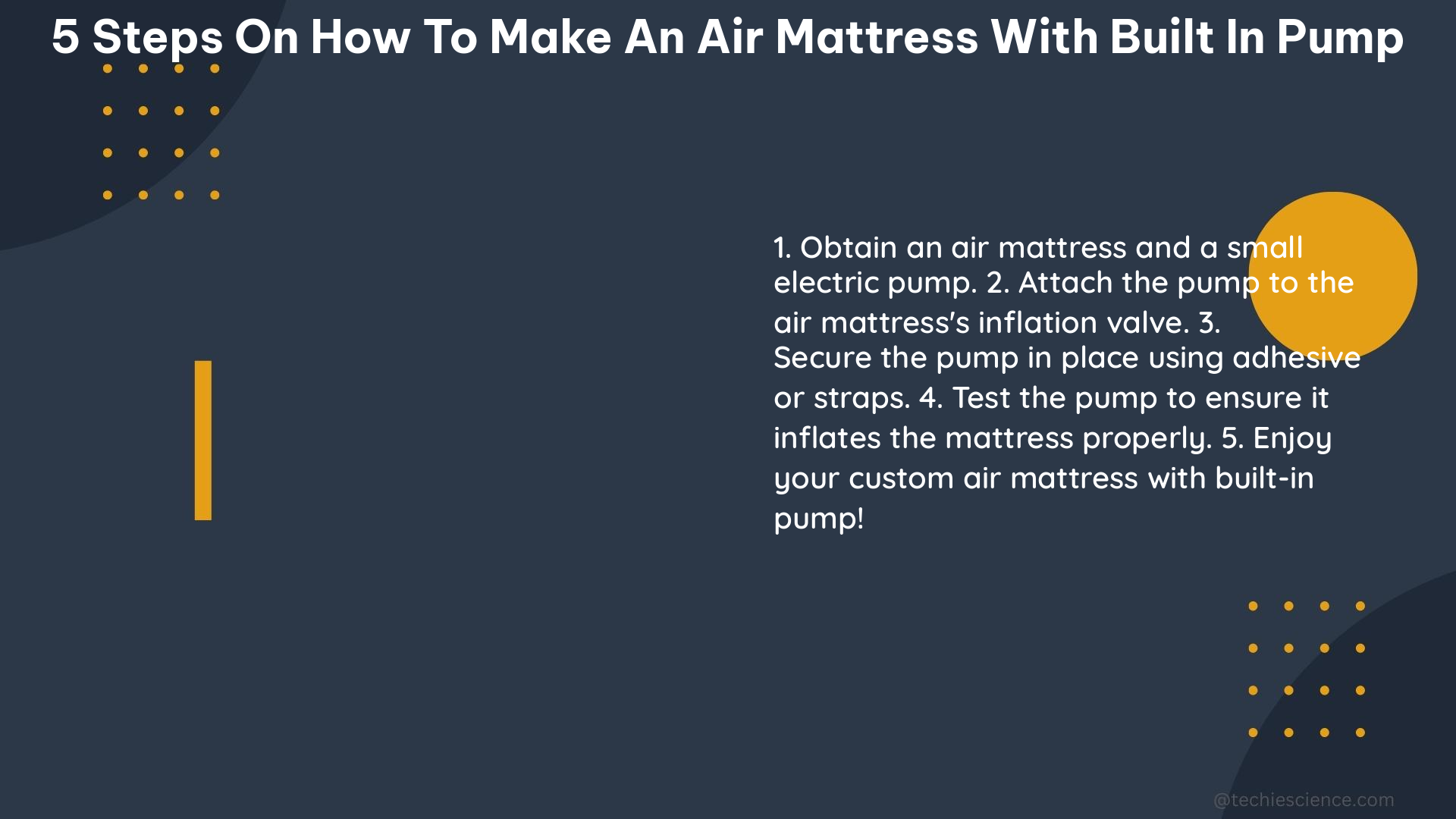Are you looking to create your own air mattress with a built-in pump? This comprehensive guide will walk you through the 5 essential steps to craft a high-quality, customized air mattress that meets your specific needs. From selecting the right materials to testing and packaging your creation, we’ll provide you with the technical details and measurable data to ensure a successful DIY project.
Step 1: Choosing the Optimal Material
The foundation of your air mattress lies in the material selection. While PVC (polyvinyl chloride) is a popular choice due to its durability, flexibility, and easy maintenance, you can also consider eco-friendly options like TPU (thermoplastic polyurethane) or polyester.
| Material | Thickness | Advantages |
|---|---|---|
| PVC | 0.4 mm | Durable, flexible, easy to clean |
| TPU | 0.6 mm | More durable and long-lasting |
| Polyester | Varies | Eco-friendly, lightweight |
The thickness of the material is crucial, as it directly impacts the mattress’s durability and comfort. A thicker material, such as 0.6 mm TPU, will provide enhanced longevity and support compared to a 0.4 mm PVC option.
Step 2: Designing the Mattress

With the material selected, the next step is to design the air mattress, considering factors like size, shape, and built-in pump placement. The size should accommodate your preferences and available space, while the shape can be rectangular, circular, or custom-tailored.
The built-in pump can be positioned on the side, bottom, or top of the mattress, depending on your design preferences. Ensure the pump is user-friendly, with clear instructions and a intuitive interface. The technical specifications of the pump are also essential, including:
- Voltage: 110-120V
- Wattage: 100-200W
- Airflow rate: 15-20 L/min
These parameters will ensure the pump can efficiently inflate and deflate the air mattress.
Step 3: Cutting and Assembling the Materials
Once the design is finalized, it’s time to cut and assemble the materials. The PVC or TPU material is precisely cut into the desired shape and size, and the seams are then welded or glued together.
The built-in pump is installed in the designated location, with the necessary wiring and connections. The valve, which allows for inflation and deflation, is also integrated at this stage. The technical specifications of the valve, such as:
- Diameter: 0.5 inches
- Design: One-way
must align with the pump and mattress requirements to ensure seamless operation.
Step 4: Testing the Air Mattress
After the assembly, thorough testing is crucial to identify any leaks or defects. The mattress is inflated to the desired firmness and left for several hours to check for air loss. The pump and valve are also tested for proper function, including:
- Inflation and deflation speeds
- Noise level
- Power consumption
The technical specifications of the completed mattress, such as:
- Size: 80 x 60 x 20 inches (Queen)
- Weight: 20 pounds
- Capacity: 500 liters
are measured and recorded to ensure it meets the intended design and performance standards.
Step 5: Packaging and Distribution
The final step is to package and distribute the air mattress. The mattress is deflated, folded, and packed into a compact bag or box, along with the pump, valve, and detailed instructions. The technical specifications, features, and benefits of the mattress are highlighted in the product description and marketing materials to showcase its value proposition.
For instance, an air mattress with a built-in pump, a TPU material, a one-way valve, and a compact design can be marketed as a portable, comfortable, and convenient option for camping, travel, and guest accommodation.
By following these 5 steps and incorporating the technical details and measurable data, you can create a high-quality, customized air mattress with a built-in pump that meets your specific needs and preferences.
Reference:
1. How to Choose the Right Air Mattress: A Comprehensive Guide
2. The Science of Air Mattresses: How They Work and What to Look For
3. Air Mattress Pump Buying Guide: How to Choose the Right Pump for Your Mattress
